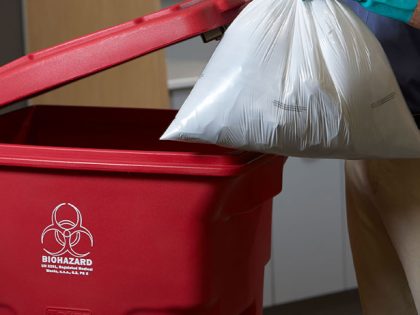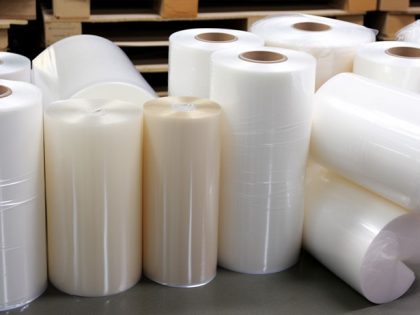- Your cart is empty
- Continue Shopping
Packaging Thickness and Gauge: Understanding Specifications for Optimal Performance
-
4scxi
- Posted on
- 0 comments

Introduction
One of the most critical yet often misunderstood aspects of packaging selection is thickness or gauge. The thickness of packaging materials directly impacts their performance, cost, and suitability for specific applications. This comprehensive guide explains how to understand and select the right specifications for your packaging needs.
Understanding Packaging Thickness Measurements
Common Measurement Units
Microns (μm):
- Most commonly used internationally
- 1 micron = 0.001 millimeters
- Typical range: 10-200 microns for most packaging films
Mils:
- Primarily used in North America
- 1 mil = 0.001 inches = 25.4 microns
- Common range: 0.5-8 mils for packaging applications
Gauge:
- Traditional measurement, still widely used
- Often refers to thickness in specific applications
- Can vary by industry and material type
Conversion Reference
- 1 mil = 25.4 microns
- 1 micron = 0.0394 mils
- 100 microns = 3.94 mils
- 50 microns = 1.97 mils
Factors Affecting Thickness Selection
Material Properties
Strength Characteristics:
- Tensile strength increases with thickness
- Puncture resistance improves with heavier gauges
- Tear resistance generally correlates with thickness
Barrier Properties:
- Thicker films provide better moisture barriers
- Gas transmission rates decrease with increased thickness
- Chemical resistance often improves with gauge
Application Requirements
Load Capacity:
- Heavier products require thicker packaging
- Dynamic loads need different specifications than static loads
- Consider both weight and stress concentration points
Environmental Conditions:
- Temperature extremes may require thicker materials
- UV exposure considerations for outdoor applications
- Chemical exposure requirements
Thickness Specifications by Application
Polythene Bags
Light-Duty Applications (10-25 microns):
- Grocery bags
- Bread bags
- Light retail packaging
- Temporary storage bags
Medium-Duty Applications (25-50 microns):
- Shopping bags
- Garment bags
- General merchandise packaging
- Food storage bags
Heavy-Duty Applications (50-100+ microns):
- Industrial packaging
- Construction materials
- Agricultural applications
- Waste disposal bags
Stretch Films
Light Gauge (8-12 microns):
- Pre-stretched films
- Light-weight products
- Automated high-speed applications
Standard Gauge (15-20 microns):
- General pallet wrapping
- Medium-weight loads
- Hand-wrap applications
Heavy Gauge (23-30+ microns):
- Heavy industrial loads
- Sharp-edged products
- Extreme weather conditions
Shrink Films
Thin Films (12-19 microns):
- Lightweight products
- Multipacking applications
- Point-of-sale displays
Medium Films (19-25 microns):
- General shrink wrapping
- Retail packaging
- Bundling applications
Heavy Films (25-75 microns):
- Industrial shrink wrapping
- Heavy product bundling
- Weather protection
Quality Control and Testing
Thickness Measurement Methods
Mechanical Measurement:
- Micrometer calipers for spot measurements
- Thickness gauges for continuous monitoring
- Contact measurement methods
Non-Contact Measurement:
- Beta ray thickness gauges
- Ultrasonic measurement
- Optical interference methods
Thickness Tolerance Standards
- Typical Tolerances: ±5-10% for most packaging films
- Critical Applications: ±2-5% for precision requirements
- Quality Grades: Different standards for different applications
Cost Considerations
Material Cost Factors
- Direct Correlation: Cost generally increases with thickness
- Performance Value: Optimal thickness provides best cost-performance ratio
- Waste Reduction: Proper thickness selection reduces product damage costs
Total Cost Analysis
- Material Costs: Direct film/bag costs
- Labor Costs: Application time and complexity
- Damage Costs: Product protection value
- Disposal Costs: Environmental and waste management
Performance Optimization
Right-Sizing Thickness
Under-Specification Risks:
- Product damage during handling
- Premature packaging failure
- Increased replacement costs
- Customer dissatisfaction
Over-Specification Costs:
- Unnecessary material expenses
- Increased storage requirements
- Higher disposal costs
- Potential processing difficulties
Testing and Validation
Performance Testing Methods:
- Drop tests for impact resistance
- Puncture tests for sharp object protection
- Tensile tests for strength verification
- Environmental tests for condition resistance
Sustainable Thickness Considerations
Material Optimization
- Source Reduction: Using minimum effective thickness
- Performance Enhancement: Additives to improve thin-film performance
- Multi-Layer Technology: Optimizing thickness distribution
Recycling Implications
- Contamination Levels: Thicker films may have different recycling streams
- Sorting Efficiency: Thickness affects automated sorting systems
- End-of-Life Processing: Different thickness requirements for recycling
Industry-Specific Requirements
Food Packaging
- Barrier Requirements: Specific thickness for shelf-life protection
- Regulatory Compliance: Food contact material specifications
- Temperature Resistance: Thickness for thermal processing
Medical Packaging
- Sterility Barriers: Thickness requirements for sterilization
- Puncture Resistance: Protection for sharp medical devices
- Regulatory Standards: FDA and ISO thickness specifications
Industrial Applications
- Chemical Resistance: Thickness for chemical compatibility
- Mechanical Strength: Load-bearing requirements
- Environmental Protection: Weather and UV resistance
Best Practices for Thickness Selection
Assessment Process
- Define Requirements: Clearly specify performance needs
- Evaluate Conditions: Consider all environmental factors
- Test Samples: Validate performance with actual products
- Monitor Performance: Track real-world results
- Optimize Continuously: Adjust based on feedback
Documentation and Specifications
- Clear Specifications: Document thickness requirements precisely
- Tolerance Requirements: Specify acceptable variation ranges
- Testing Standards: Reference appropriate test methods
- Quality Assurance: Establish inspection procedures
Future Trends in Thickness Technology
- Smart Materials: Thickness-responsive materials
- Nano-Enhancement: Improved performance at reduced thickness
- Customized Solutions: Variable thickness within single materials
- Real-Time Monitoring: Thickness measurement during production



